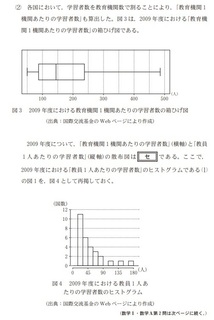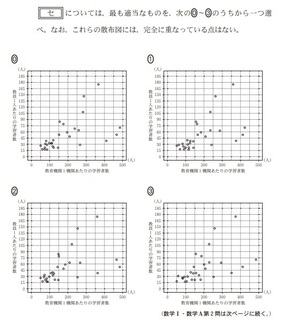�V�K�L���̓��e���s�����ƂŁA��\���ɂ��邱�Ƃ��\�ł��B
�L��
�V�K�L���̓��e���s�����ƂŁA��\���ɂ��邱�Ƃ��\�ł��B
2024�N05��11��
�p��@�����lj��ɒ��킵�悤�y��T��z
���@�ȉ��̒����͕�����₷�����邽�߁A�Ȃ����Ă��镔���͂P�����Ƃɉ��s�A�i���͂Q�����s���s���܂��B
��
Native American and Canadian Indian tribes have passed down stories going back thousands of years about giant ape-men, or Bigfoot, living in the forest of the western United States and Canada.
They called these creature Sasquatch, Yerin, or Mountain Devils.
Regardless of the name, the descriptions of these animals are usually the same.
The Bigfoot is usually described as being very tall, well over two meters.
It is covered in thick, dark hair and usually gives off a bad odor.
The Bigfoot's body is usually very muscular and ape-like, yet it walks upright and has a face more similar to that of humans than of apes.
For the most part, these creatures appear not to be violent or aggressive.
Big foot sightings are usually of lone, or single, creatures, but there have been reports of people seeing groups, or families, of Bigfoot.
People in other countries also tell stories of similar ape-men.
In the Himalayas, a mountain range in Nepal, people call these creatures Yeti, or Abominable Snowmen.
The Africans call them Ngoloko, and the Chinese tell stories of Gin-sung, or Bearman.
Though sightings have been reported for centuries, is there any scientific evidence for the existence of these creatures?
Some say yes, and others say no.
Dr. Grover Krantz, a physical anthropologist at the University of Oregon, believes that Bigfoot may be a type of creature known as a Gigantopithecus.
A Gigantopithecus is an animal that lived in Asia over 300,000 years ago and looked like a mix between an ape and a very large man.
Dr. Krantz believes that these animals, which lived long before humans, may have migrated from Asia and decided to settle in the heavily wooded area of the Pacific Northwest, where food was plentiful.
Is it possible that creatures like these could have survived for so many years unknown to humans?
Cryptozoologists compare the case of Bigfoot to that of the coelacanth.
The coelacanth is a type of fish that was believed to have gone extinct over 70 million years ago, but this fish has been discovered to be still living off the coast of South Africa.
Cryptozoologists believe that the animals that we now call Bigfoot have been able to survive by living in an area that people, until recently, have seldom gone.
There are, however, some questions that science has been unable to answer.
For example, why have no dead Bigfoot bodies ever been discovered?
And where is the physical proof of their existence?
Bigfoot researchers point out that it is unusual to find the dead remains of any animal in the forest.
Most of the time, they say, other animals eat the remains soon after death; this may be the case for Bigfoot, too.
Many skeptics, people who do not believe in Bigfoot, say that the videos and photographs of Bigfoot are really pictures of people wearing ape costumes.
They also believe that the Bigfoot footprints are really the footprints of bears, or footprints made by tricksters trying to fool scientists.
It is possible that we may never know the truth about these animals.
If they have avoided being seen for the last several thousand years, then maybe they will stay hidden for another several thousand.
Or it may be that as we humans go deeper and deeper into the forest of Northwest America and Canada, we may finally come face to face with the elusive Bigfoot.
�����̖�肩������Ă����܂��傤
�m�R�n�@The Bigfoot has been compared to the coelacanth because
�@they are both believed to have gone extinct because humans invaded their habitats.
�Athe coelacanth is an animal that has survived in areas populated by humans and other animals.
�Bthe coelacanth is an exemple of a creature that has survived for a long time without being discovered by humans.
�Cthe Bigfoot was to some recently spotted off the coast of South Africa where the coelacanth was first discovered.
Bigfoot �� coelacanth �̔�r�ɂ��ẮA��ł����Ǝv���Ă�����ł���Ȃ�����A�����Ԃ̐������m�F���ꂽ�Ƃ��������ł��傤�B
���̂��߁A�����͇B�ł��B
�m�S�nAccording to some researchers, one possible reason why we have no physical proof of Bigfoot's existence is because
�@other animals could have consumed dead Bigfoot bodies, making them disappear.
�Athe dead remains of animals are usually found in places where humans don�ft explore.
�Bthe people who have found physical proof have kept it to themselves for their own benefit.
�Cthe bodies and footprints of Bigfoot have been often mistaken for those of bears.
Bigfoot�����݂���؋��ɂ��Ă̕��͂ł����A���̒��ł́A�uMost of the time, they say, other animals eat�j the remains soon after death; this may be the case for Bigfoot, too�v�̕���������ł��ˁB
�����͇@�ƂȂ�܂��B
�m�T�n�@The author implies that
�@the Bigfoot should remain a mystery as it has been for the past several thousand years.
�Awe should not try to find out the truth about the Bigfoot as it would only result in conflict.
�Bwe cannot say if the Bigfoot is real or not because there is not enough evidence to support either side.
�Cseeking the truth about the Bigfoot will lead us to take better care of our environment.
�Ō�̐ݖ�́A���̕��͉͂��������������͂������̂��Ƃ������̂ł����A
�uIt is possible that we may never know the truth about these animals.�v
���������Ă����Ă��镔���ɂȂ�܂��ˁB
�Ƃ����킯�ŁA�����͇B�ł��B
����́A�V���������lj�����邽�߁A1�x��2�x�X�V�������܂��B
�ǂ�����낵�����肢�������܂��B
���@�������߂̎Q�l���͍ڂ��Ă����܂����A�܂��͎����̃��x���ɍ������Q�l����I�т܂��傤�B�Q�l���̑I�ѕ��͂܂��ʂ̋@��i�T�u�u���O�j�ł�낤�Ǝv���܂�
 | 2023�N�p �S����w������萳�� �p��i������ҁj [ ������ ] ���i:7260�~ |
�p��@�����lj��ɒ��킵�悤�y��U��z
�O�Ɉ��킹�Ă�����������w�Ƃ͈Ⴄ�Ƃ���ɂȂ�܂��̂ŁA��Փx������Ă��܂����A�ǂ�����낵�����肢�������܂��B
���@�ȉ��̒����͕�����₷�����邽�߁A�Ȃ����Ă��镔���͂P�����Ƃɉ��s�A�i���͂Q�����s���s���܂��B
��
If you've ever pondered whether your pet cat gives a whisker about your whereabouts, research may have an answer: cats seem you track their owners while they move about the house, and they are surprised if they appear somewhere they are not expecting them.
The finding supports the idea that cats retain a mental representation of their owners, even when they can't see them; a crucial bridge to higher mental processes such as forward planning and imagination.
Cats are notoriously ( ) creatures.
Although previous research has suggested that cats will search in the correct place if food is seen to disappear and expect to see their owner's face if they hear their voice, it was unclear how this ability translated into real life.
"It is also said that cats are not as interested in their owners as dogs are, but we had doubts about this point", said Dr Saho Takagi at the University of Kyoto in Japan.
To investigate, Takagi and colleagues recorded what happened when fifty domestic cats were individually shut inside a room, and repeatedly heard their owner calling their name from outside, followed by either a stranger's voice, or that of their owner, coming through a speaker on the opposite side of the room they were inhabiting.
Eight human observers watched these recordings and ranked the cat's level of surprise based on their ear and head movements.
Only when their owner's voice suddenly "appeared" inside the room - implying that they had somehow teleported there - did the cats appear confused.
"Thies study shows that cats can mentally map their location based ( C ) their owner's voice", said Takagi, whose research was published in the journal PLOS One.
"It suggests that cats have the ability to picture ( D ) in their minds.
Cats may have a more ( E ) before."
However, it's not entirely surprising that cats possess this ability: "That awareness of movement is critical to a cat's survival", said Roger Tabor, a biologist, author and presenter of the BBC TV series Cats.
"A lot of what a cat has to interpret in its territory is an awareness of where other cats are.
It is also important for hunting: how could a cat catch a field mouse moving around beneath the grass if it couldn't use clues, such as the occasional rustle, to see in its mind's eye, where they are?
A cat's owner is extremely significant in its life as a source of food and security, so where we are is very important."
Anika Kelsey, an expert studying cat's behaviour and author Let's Talk About Cats, said: "Cats have a close relationship with us and most feel settled and safe within our ( F ) so our human voice would be part of that bond or relationship.
When I am dealing ( G ) cats that suffer separation anxiety, I usually do not recommend playing the recording of the owner's voice in the home as this can cause anxiety with the cat hearing the voice, but not knowing where their human is."
Curiously, the cats did not show the same surprise response shen the owners' voice were replaced with cat meows or electronic sounds.
Possibly, this is because adult cats do not tend to use voice as their primary means of communication with one another, many may rely on other cues such as scent instead.
"The 'meow' that we used in this study is a voice signal that is only emitted ( I ) humans, except among kittens", said Takagi.
"Cats may not be able to identify other cats from their meows."
�ݖ�ɂ��Ă͌���A�����̉�����I�������ɂ���Ƃ��āA�܂��͒�����������Ă����܂��B
��P�i��
�m��If�� you�i��S�j've ever pondered�i��V�j
�m��whether�� your pet cat�i��S�j gives�i��V�j a whisker�i��O�j
�mabout your whereabouts�n�i���ua whisker�v�̕⑫�j�n�i��O�j,
research�i��S�j may have�i��V�j an answer�i��O�j:
cats�i��S�j seem�i��V�j �m(that) you�i��S�j track�i��V�j their owners�i��O�j
�m��while�� they�i��their owners�j move�i��V�j about the house�n�i���utheir owners��⑫�j�n�i��C�j
, ��and��
they�i��S��cats�j are surprised�i��V�j �m��if�� they�i��S�j appear�i��V�j
�m��somewhere�� they�i��S�j are not expecting�i��V�j them�i��O�j�n�i���uappear�v�̕⑫�j�n�i��O�j.
���uponder�v�F�n�l����A�v�Ă���^�uwhether�v�F�`���ǂ����^�uwhereabout�v�F���ꏊ�A�s��
��w���ς�������߂��A�����[���猋�\�Ȓ��߂ȕ��ł��ˁc
���Ȃ�̐��̐ڑ������g���Ă����肵�܂����A��̂悤�ɕ������Ă����Ƃ����ԓǂ݂₷���̂ł͂Ȃ����Ǝv���܂��B
��Ƃ��ẮA
�����A���Ȃ��̃y�b�g�̔L�����Ȃ��̍s�����C�ɂ��Ă��邩�ǂ����l�������Ƃ�����Ȃ�A��������������Ă��邩������܂���B�L�͎����傪�Ƃ̒����ړ�����ۂɔނ��ǐՂ��Ă���悤�ł���A�ނ炪�\�����Ȃ��ꏊ�Ɍ����Ƌ����Ă���悤�ł��B
�ƂȂ�܂��B
��Q�i��
The finding�i��S�j supports�i��V�j the idea�i��O�j
�m��that�� cats�i��S�j retain�i��V�j a mental representation�i��O�j �mof their owners�n�n�i��idea�̓��e�j,
even �m��when�� they�i��S�j can't see�i��V�j them�i��O�j�n;
a crucial bridge�i��S�j �mto higher mental�n�i���ua crucial bridge�v���C���j processes�i��V�j
��such as forward�� planning�i��O�@�j ��and�� imagination�i��O�A�j.
����͑�Q�i���܂łƂ��܂����A���͂������Ȃ�Ƃ�͂蕶�͂̍\�����F�X�����肠���ĉ�ǂ�����Ȃ�܂��ˁB
��F
���̌��ʂ́A�L��������̐��_�I�ȕ\�ۂ�ێ����Ă���Ƃ����l�����x�����Ă��܂��B����́A�ނ炪������������Ȃ��Ă��z���͂⏫���̌v��Ȃǂ̍����̐��_�I�v���Z�X�ɂȂ���d�v�ȉ˂����ł��B
����͂��̑����������Ă��������Ǝv���܂��B
���@�������߂̎Q�l���͍ڂ��Ă����܂����A�܂��͎����̃��x���ɍ������Q�l����I�т܂��傤�B�Q�l���̑I�ѕ��͂܂��ʂ̋@��i�T�u�u���O�j�ł�낤�Ǝv���܂�
 | 2023�N�p �S����w������萳�� �p��i������ҁj [ ������ ] ���i:7260�~ |
�p��@���@�ɂ��āy��Q�O��z
�܂��T�����n�܂�������ł��B
�����ƁA�m���Ɋ�b���ł߂鎞���Ǝv���܂��̂ŁA�n���ł����撣���Ă����܂��傤�B
�ł́A�{���̖��ł��B
��18�@What my teacher says is usually simple, explict, and �i�@�@�@�j.
�I�����́A�@to the good �Ato the limit �Bto the minute �Cto the point�ł��B
�ł́A���Ă����܂��傤�B
�mWhat�i��O�j my teacher�i��S�j says�i��V�j�n�i��S�j is�i��V�j usually simple�iC�j, explict�i��C�j, and �i�@�@�@�j�i��C�j.
��F���̐搶���������Ƃ́A�Ȍ��ŁA���m�ŁA�i�@�@�@�j���B
�ƂȂ�܂��B
�i�j�̑O�ɂ���uand�v�́usimple�v�uexplict�v�Ɓi�j����Ă�����̂ŁA���ׂĂ��uWhat my teacher says�v�Ɓ��ɂȂ�i��Q���^SVC�A�r���b�Ƃ������Ӗ��ɂȂ邽�߁j���̂ł��B
�ł́A�I�������݂Ă݂܂��傤�B
�@to the good�F���ʂ��グ�āA�L���Ɂ@�Ato the limit�F���E�܂�
�Bto the minute�F���̎��ԂɁ@�Cto the point�F�K�ȁA�v��
�ƂȂ�܂��B
���āA�I�����̈Ӗ����l���āA�����͓������C�ƂȂ�܂��B
�����܂ŘA�����Ċ��p��ł����̂ŁA������Ⴄ��肪��������Ȃ��c
���@�ȉ��̂悤�ȎQ�l�����g���A�p���@��p��̖��ւ̊�����Ă����܂��傤�I
 | 2023�N�p �S����w������萳�� �p��i������ҁj [ ������ ] ���i:7260�~ |
 | 2023�N�p �S����w������萳�� �p��i�lj��f�ڕҁj [ ������ ] ���i:4400�~ |
 | ���Z�@����e�X�g�@���_�A�b�v���W�@�p���@ [ ������ ] ���i:1210�~ |
�ł́A����ȍ~����낵�����肢�������܂��B
���wI�EA�@�ߋ���J�ɉ���y��P�O��z
�O��f�[�^���͂ɓ���܂������A�������w���w���ʃe�X�g�̑���������������Ă������Ǝv���܂��B


����̖��́u���Ђ��}�v�ƌĂ����̂ł��ˁB
���Ђ��}�̓ǂݕ��͊�{�ł����A�����炢���Ă����܂��傤�B
���[���ŏ��l�ƍő�l�A���̒��ɏ�����Ă�������u��Q�l���ʐ��v�i�����l�j�A���̗��[����P�l���ʐ��Ƒ�R�l���ʐ��ł��B
��{�������炢�����Ƃ���Ŗ����݂Ă݂܂��傤�B
�ŏ��l�F�T�O�A�ő�l�S�T�O�ȏ�T�O�O����
��P�l���ʐ��F�T�O�ȏ�P�O�O�����A��Q�l���ʐ��F�P�O�O�ȏ�P�T�O����
��R�l���ʐ��F�Q�O�O�ȏ�Q�T�O����
�����Ŗ�̓����ɂȂ�U�z�}���݂Ă݂܂��傤�B
⓪�@50�`100�F9�A100�`150�F6�A150�`200�F4�A200�`250�F2�A
�@�@250�`300�F4�A350�`400�F1�A400�`450�F1�A450�`500�F2
�@�@�ˁ@�ő�l���S�T�O�ȉ��̂��߁@���O
�A�@50�`100�F9�A100�`150�F8�A150�`200�F3�A200�`250�F2�A
�@�@250�`300�F3�A350�`400�F2�A450�`500�F2
�B�@50�`100�F6�A100�`150�F6�A150�`200�F6�A200�`250�F4�A
�@�@250�`300�F2�A350�`400�F2�A400�`450�F1�A450�`500�F2
�S�̂��Q�X�Ȃ̂ŁA���l���ʂ͖�V�ԖځA��Q�l���ʂ͖�P�T�ԖځA��R�l���ʂ͖�Q�Q�Ԗ�
⓪�@��P�l���ʁF50�`100�A��Q�l���ʁF100�`150�A��R�l���ʁF250�`300
�A�@��P�l���ʁF50�`100�A��Q�l���ʁF100�`150�A��R�l���ʁF200�`250
�B�@��P�l���ʁF100�`150�A��Q�l���ʁF150�`200�A��R�l���ʁF200�`250
�����̒��Ŕ��Ђ��}�ƍ��v������͇̂A�ƂȂ�܂��B
���@�Q�l���̒��ł͍������̂ɂȂ�܂����A���w���������Ȃ����ƂŎ�������ł���̂ł����߂ł��B�������A�������{�I�Ȃ��Ƃ͂ł���悤�ɂȂ�����łȂ��ƁA���p�����ł���l�ɂȂ��Ă��܂��̂ŁA�C��t���Ă��������B
 | 2023�N�p �S����w������萳�� ���w�i������ҁj [ ������ ] ���i:5500�~ |
 | 2023�N�p �S����w������萳�� ���w�i��������ҁj [ ������ ] ���i:5830�~ |
 | 2023�N�p �S����w������萳�� ���w�i�lj��f�ڕҁj [ ������ ] ���i:4400�~ |
������ǂ�����낵�����肢�������܂��B
